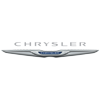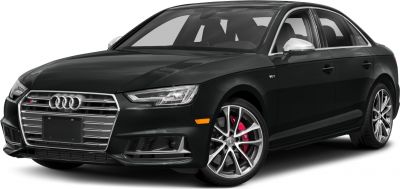 1995 Chrysler Cirrus Dimensions, Size & Specs
1995 Chrysler Cirrus Dimensions, Size & SpecsMeasurements of the 1995 Chrysler Cirrus, engineered for optimal performance and comfort
| Dimensions | |
|---|---|
| Length: | 4724 mm186.0 in15.5 ft |
| Width: | 1803 mm71.0 in5.9 ft |
| Height: | 1374 mm54.1 in4.5 ft |
| Trunk Capacity: | 445 liter15.7 cu ft |
| Weight Specifications | |
| Curb Weight: | 1397-1406 kg3080-3100 lbs |
| Maximal permitted Weight: | 1930 kg4255 lbs |
| Tire Specifications | |
| Rims Size: |
|
| Tire Size: |
|
The Chrysler Cirrus, produced between 1995 and 2000, is a mid-size sedan that offers a solid balance of space, comfort, and style. With an overall length of 4724 mm (186 inches) and a width of 1803 mm (71 inches), the Cirrus provided a spacious interior relative to its class during its production years. Its height measures 1374 mm (54 inches), which enabled a lower aerodynamic profile while maintaining adequate headroom inside. The curb weight of the Chrysler Cirrus ranges from 1397 to 1406 kilograms (approximately 3,080 to 3,100 pounds), reflecting its robust build without being overly heavy, and it supports a maximum gross weight of up to 1930 kg (4,255 lbs). This mid-size sedan also features a luggage capacity of 445 liters (about 15.7 cubic feet), providing enough space for daily commuting or moderate luggage needs. The car rides on 15-inch rims paired with tires sized 185/65 R15, balancing ride comfort and handling for typical road conditions. Overall, the Chrysler Cirrus of this generation was designed to meet the needs of families and drivers looking for a practical yet stylish sedan offering solid performance and roominess in its segment.
Discover the standout features that make the 1995 Chrysler Cirrus a leader in its class
Have a question? Please check our knowledgebase first.
The Chrysler Cirrus sedan, produced from 1995 to 2000, measures 4724 mm (185.9 inches) in length, 1803 mm (71.0 inches) in width, and 1374 mm (54.1 inches) in height. These dimensions position it as a mid-size sedan suitable for families and daily use, balancing interior space with manageable external size for urban and suburban environments.
The curb weight of the Chrysler Cirrus ranges from 1397 kg to 1406 kg (3078 to 3099 lbs), depending on the trim and equipment level. The maximum weight capacity, which includes passengers and cargo, is 1930 kg (4256 lbs). This weight profile contributes to a balanced ride quality and stability, supporting efficient fuel consumption and manageable handling.
The Chrysler Cirrus provides a luggage capacity of 445 liters (approximately 15.7 cubic feet). This trunk volume is quite practical for a mid-size sedan, allowing owners to carry several suitcases, groceries, or other loads comfortably. It’s a suitable choice for daily commuting as well as weekend trips, offering enough storability without compromising passenger space.
The Chrysler Cirrus from 1995-2000 typically features 15-inch rims paired with 185/65 R15 sized tires. This setup provides a good balance between ride comfort, handling, and tire durability. The tire size ensures sufficient road grip and contributes to the overall stable driving dynamics the Cirrus is known for.
With its length of 4724 mm (185.9 in), width of 1803 mm (71 in), and height of 1374 mm (54.1 in), the Chrysler Cirrus fits comfortably into most standard residential garages. Typical single-car garages range around 6 meters (20 feet) deep and 3 meters (10 feet) wide, making the Cirrus' size well-suited for indoor parking without difficulty while allowing space to open doors and maneuver around the vehicle.
The Chrysler Cirrus replaced the Dodge Spirit and Plymouth Acclaim in Chrysler's lineup and offered a more modern and slightly larger design compared to its predecessors. With a length of 4724 mm (185.9 in), it was generally longer and wider than the Dodge Spirit, which measured about 4701 mm (185.1 in) in length and around 1765 mm (69.5 in) in width. This dimensional increase benefited interior room and comfort, featuring updated styling and a more refined aerodynamic profile, marking an evolution toward mid-size sedan competitiveness in the mid-1990s.
The Chrysler Cirrus was very competitive in size among mid-size sedans of the late 1990s. It matched closely with rivals like the Toyota Camry and Honda Accord of that period. For example, the 1995 Toyota Camry measured around 4770 mm (187.8 in) in length and 1785 mm (70.3 in) in width, while the 1995 Honda Accord was about 4765 mm (187.6 in) long and 1759 mm (69.3 in) wide. The Cirrus’ dimensions provided ample interior space and trunk volume at 445 liters (15.7 cu ft), putting it on par with or slightly better than some rivals, appealing to customers seeking a practical mid-size vehicle with modern styling and comfortable interior packaging.
The Chrysler Cirrus was designed to offer spacious seating for up to five passengers with a comfortable cabin layout geared toward ergonomics and convenience. Its exterior dimensions translate into generous headroom, legroom, and shoulder room for front and rear passengers. This, combined with quality materials and thoughtful interior design typical of Chrysler in the mid-1990s, made traveling in the Cirrus comfortable for daily commutes and longer trips alike. The 445-liter trunk capacity also allows passengers to carry sufficient cargo without compromising passenger space.
The Chrysler Cirrus was offered exclusively as a four-door sedan during its production years from 1995 to 2000. It was built on Chrysler's JA platform, featuring a wheelbase that measured approximately 2700 mm (106.3 inches). The wheelbase length contributed to a smooth, stable ride and enhanced interior space, especially for rear passengers. This platform underpinned a balanced chassis suitable for both urban driving and highway cruising.
The Chrysler Cirrus introduced several notable improvements over previous mid-size Chrysler sedans such as the Dodge Spirit and Plymouth Acclaim. Mechanically, it featured improved suspension tuning for better ride comfort and handling balance. Design-wise, it adopted a more aerodynamic and contemporary exterior look with cleaner lines, flush-mounted components, and a modern front fascia. The use of the JA platform brought enhanced structural rigidity and crash safety improvements. Overall, these changes made the Cirrus stand out as a well-rounded mid-size sedan in the competitive 1990s market.
Discover similar sized cars.

| Production: | 2015-2018 |
|---|---|
| Model Year: | 2016 |
| Length: | 4726 mm186.1 in |
| Width: | 2022 mm79.6 in |
| Height: | 1427 mm56.2 in |

| Production: | 2016-2019 |
|---|---|
| Model Year: | 2016 |
| Length: | 4750 mm187.0 in |
| Width: | 2022 mm79.6 in |
| Height: | 1407 mm55.4 in |

| Production: | 2020-2024 |
|---|---|
| Model Year: | 2019 |
| Length: | 4770 mm187.8 in |
| Width: | 2022 mm79.6 in |
| Height: | 1404 mm55.3 in |
